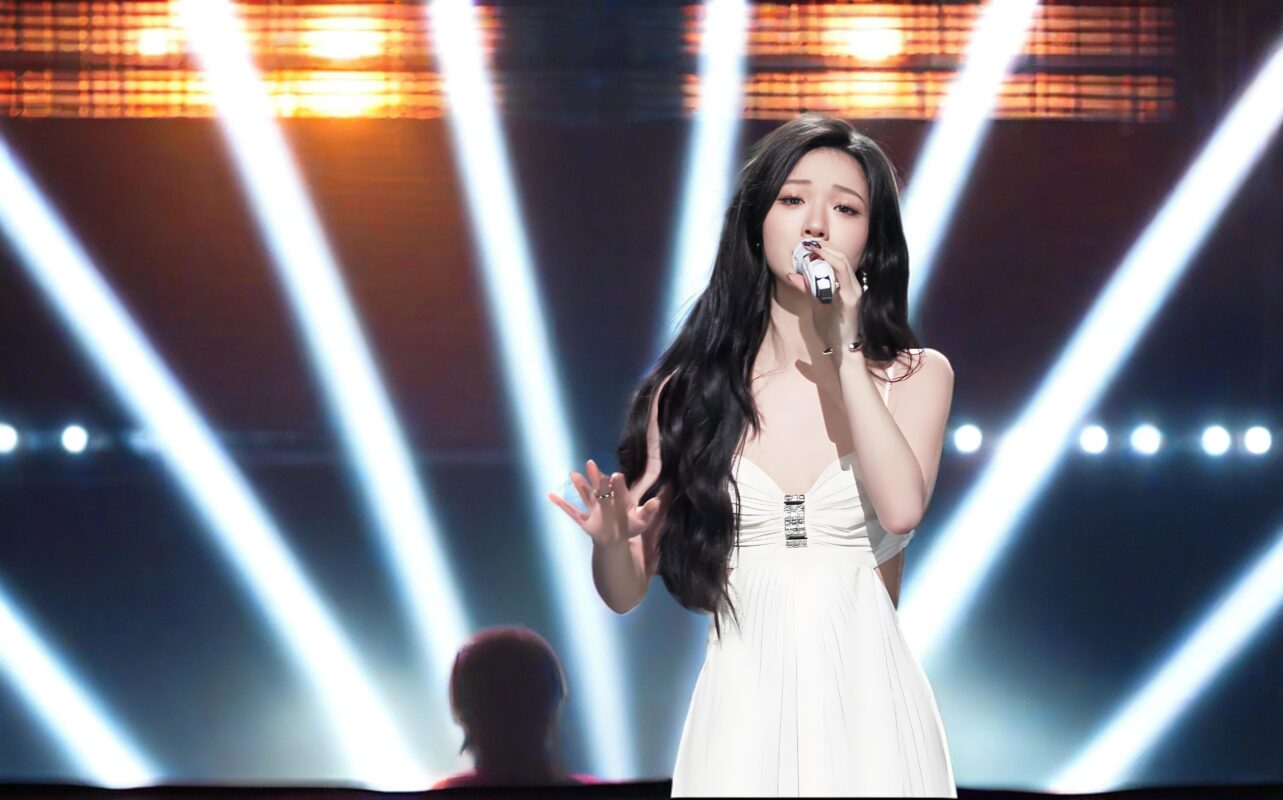Recontextualizing a Mandopop Classic: The Weight of Legacy
When 22-year-old Shan Yichun (单依纯) took the stage on China’s premier music competition Singer (我是歌手), her selection of Na Ying’s 1999 seminal ballad “Dream Once” (《梦一场》) was a high-stakes artistic gamble. The original, etched into collective memory through Na Ying’s raw, world-weary delivery, represented an era of Mandopop defined by unvarnished emotionality. For a Gen-Z vocalist to reinterpret such an iconic work required balancing reverence with reinvention—a task demanding not just technical prowess but interpretive audacity. Shan’s approach defied expectations: rather than replicating Na Ying’s signature rasp and cathartic climaxes, she deconstructed the song into a haunting meditation on memory’s fragility, transforming a breakup anthem into a psychological tone poem. The performance’s genius lay in its refusal to compete with nostalgia; instead, it excavated new emotional strata buried beneath the melody’s familiar contours.
Anatomy of a Vocal Revolution: Technique as Narrative Device
The Architecture of Restraint
Shan’s interpretation weaponized dynamic minimalism, rejecting bombastic high notes for meticulously controlled whispers. Her opening phrases hovered at the threshold of audibility—a subito piano entrance that forced audiences into rapt attention. This wasn’t mere affectation; it mirrored the lyric’s theme of vanishing realities (“早知道是这样 / 像梦一场”). By employing vocal fry and breath-tones on lines like “我又何必把泪都锁在自己的眼眶” (“Why must I lock tears in my eyes?”), she embodied suppressed grief through timbral choices, making silence as expressive as sound.
Harmonic Reimagining and Temporal Distortion
The arrangement’s stripped-down piano accompaniment—sparse, dissonant clusters replacing the original’s lush strings—created an unsettling harmonic ambiguity. Shan elongated certain vowels into microtonal slides (portamento), stretching time to evoke disorientation (“你会不会想起 我们相识的梦” / “Will you remember the dream where we met?”). Her strategic deployment of messa di voce (swelling then diminishing a single note) on the phrase “醒时人已散” (“Awake to find everyone gone”) transformed the word “散” (scatter) into a sonic metaphor for dissolution.
The Phenomenology of Heartbreak: Authenticity in the Post-Digital Age
Shan’s performance resonated precisely because it rejected contemporary pop’s emotional literalism. Where many singers weaponize melisma as emotional shorthand, Shan used ornamentation sparingly—a single, crystalline whistle register note on “空” (“empty”) pierced through the arrangement like a gasp. This restraint mirrored Gen-Z’s complex relationship with vulnerability: not as performative outpouring, but as curated introspection. Critics noted how her phrasing’s rubato elasticity mirrored the nonlinear nature of trauma recall—a stark contrast to Na Ying’s linear anguish. The performance became a Rorschach test: older listeners heard melancholy for lost love; younger audiences decoded it as existential dread about memory’s unreliability in the digital age. As Douban commentators observed, Shan transformed the stage into a liminal space where past and present heartbreaks coexisted.
Cultural Reverberations: Redefining “Cover” in Chinese Music
The aftermath proved transformative. Within 24 hours, Shan’s version topped QQ Music’s Real-Time Chart, amassing 1.8 million searches on Weibo. Musicologists praised her reinterpretive authority—a rare instance where a cover didn’t merely pay homage but supplanted collective memory. Crucially, it sparked discourse on artistic ownership: music critic Li Xiaoyuan noted, “Shan didn’t cover ‘Dream Once’; she repossessed it, proving great songs are mutable texts, not relics”. The performance’s minimalist aesthetic also influenced production trends, with producers at CNSO (China National Symphony Orchestra) citing its “orchestration through subtraction” approach in subsequent projects. For emerging singers, it became a benchmark: at Shanghai Conservatory, professors now analyze its vocal layering techniques to teach emotional modulation. Ultimately, Shan demonstrated that true innovation lies not in erasing the past, but in holding dialogue with it—a lesson reverberating far beyond Singer’s stage.

